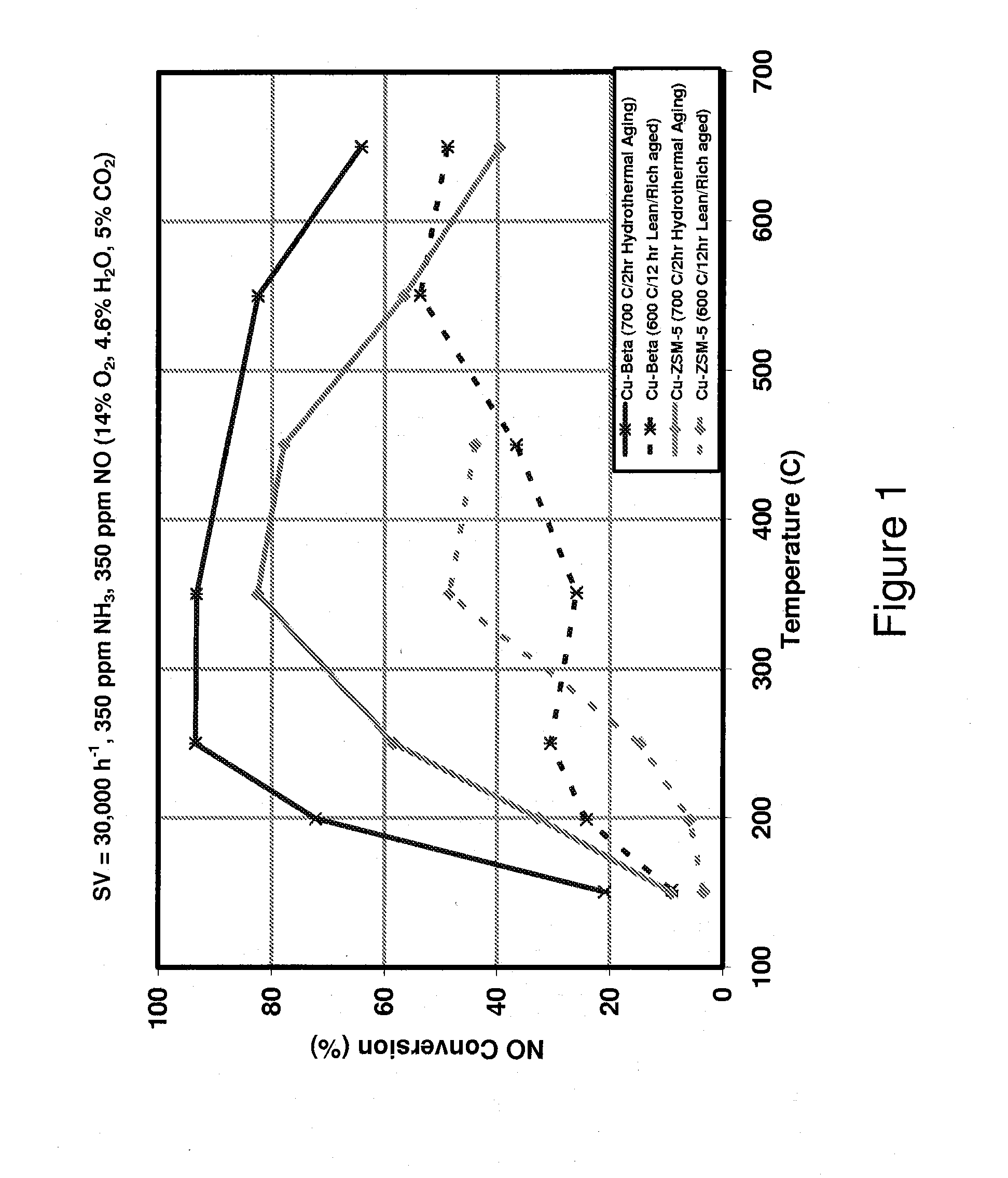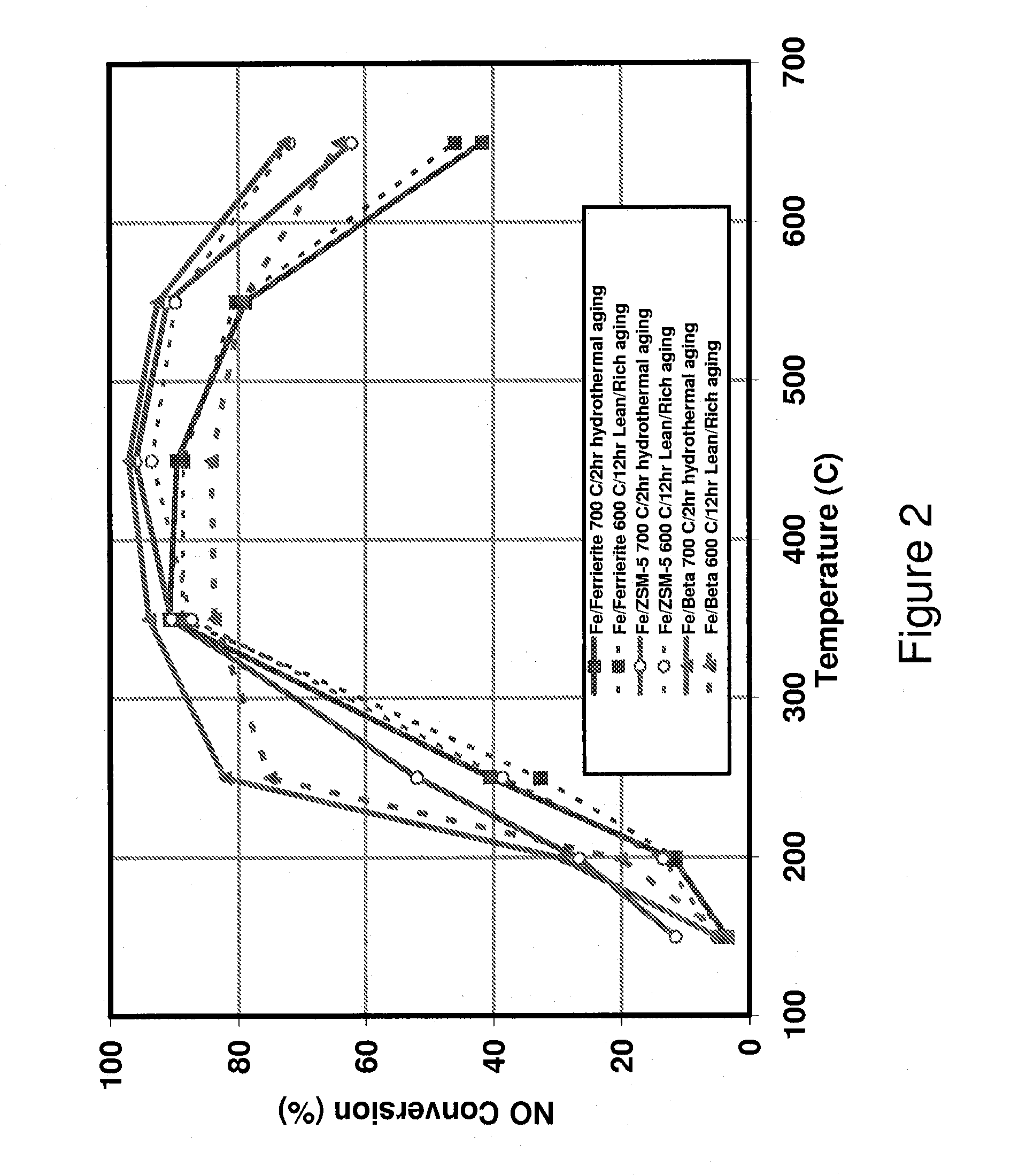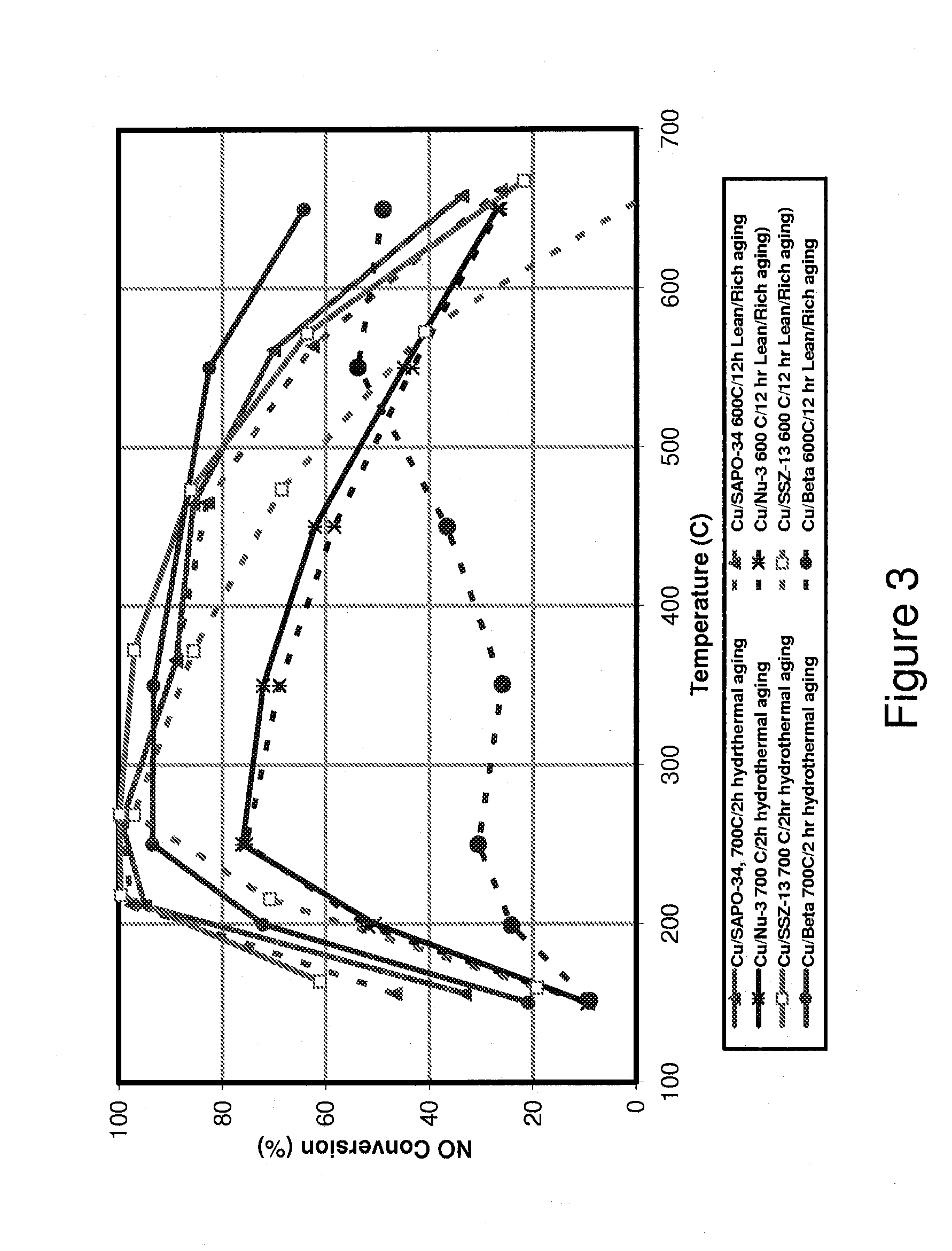Small pore molecular sieve supported copper catalysts durable against lean/rich aging for the reduction of nitrogen oxides
a technology of copper catalysts and molecular sieves, which is applied in the direction of metal/metal-oxide/metal-hydroxide catalysts, combustible gas purification/modification, arsenic compounds, etc., can solve the problems of significant exotherm, secondary emissions of non-selective reactions with oxygen, and loss of acidity
- Summary
- Abstract
- Description
- Claims
- Application Information
AI Technical Summary
Benefits of technology
Problems solved by technology
Method used
Image
Examples
examples
[0079]Although the invention is illustrated and described herein with reference to specific embodiments, the invention is not intended to be limited to the details shown.
[0080]Rather, various modifications may be made in the details within the scope and range of equivalents of the claims and without departing from the invention.
[0081]1. Steady State SCR Evaluation
[0082]Steady-state selective catalytic reduction (SCR) activity tests were conducted in a quartz reactor of 24 inches in length, and uniformly heated by two tube furnace units of 12 inches length. Experiments were performed at a gas hourly space velocity of 30,000 hr−1 utilizing catalyst dimensions of 1 inch diameter×1 inch length. All gas lines directly connected to the reactor were maintained at 130° C. by heating tape to prevent gas species adsorption on the walls of the gas line. Water vapor was provided by a water bomb, which was constantly maintained at 70° C.
[0083]Prior to reaching the catalyst bed, the feed gas was ...
PUM
| Property | Measurement | Unit |
|---|---|---|
| temperature | aaaaa | aaaaa |
| temperature | aaaaa | aaaaa |
| temperature | aaaaa | aaaaa |
Abstract
Description
Claims
Application Information
 Login to View More
Login to View More - R&D
- Intellectual Property
- Life Sciences
- Materials
- Tech Scout
- Unparalleled Data Quality
- Higher Quality Content
- 60% Fewer Hallucinations
Browse by: Latest US Patents, China's latest patents, Technical Efficacy Thesaurus, Application Domain, Technology Topic, Popular Technical Reports.
© 2025 PatSnap. All rights reserved.Legal|Privacy policy|Modern Slavery Act Transparency Statement|Sitemap|About US| Contact US: help@patsnap.com



